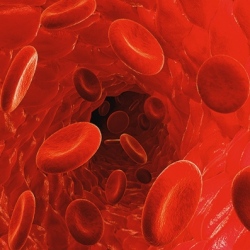
A test that exploits a quirk of physics could make blood tests for certain diseases faster, cheaper, and easily performed. When light moves through water, or window glass, it bends slightly. This is a familiar phenomenon to nearly everyone, and it happens with crystals that have a regular and simple structure.
A less familiar phenomenon is birefringence. This happens when crystals have a slightly more complicated structure. When a light wave hits one of these crystals, part of it is bent at one angle, and part of it is bent at another angle. Essentially the light wave is split in two. Its two parts travel through the substance at different angles, at different speeds, and are polarized in different ways.
Birefringence is not a factor when light moves through blood. Place a drop of blood on top of a horizontally polarising filter, then put a vertically polarising filter on top of it, and all the light will be blocked out. However, add some enzymes to the blood and they form crystals. These crystals polarise the light in two different directions, which means that same drop of blood, squished between polarisers, will suddenly let light through, and it will let it through in a certain pattern.
With the right enzymes, the pattern will change depending on the presence of glucose or cholesterol, HIV or Ebola, or even malaria. The pattern pictured above is the one that emerges if the Ebola virus is present in the blood. And it’s visible to the naked eye. Tests like this mean that technicians can make diagnoses with just a couple of cheap polarized filters (sunglasses are polarised filters), some blood, enzymes, and the ability to recognise patterns.
At a time when healthcare costs are going up, the ability to diagnose people everywhere, with little money and little equipment, could make a big difference. Let’s hope we see more low-cost healthcare technology like this in the future.
